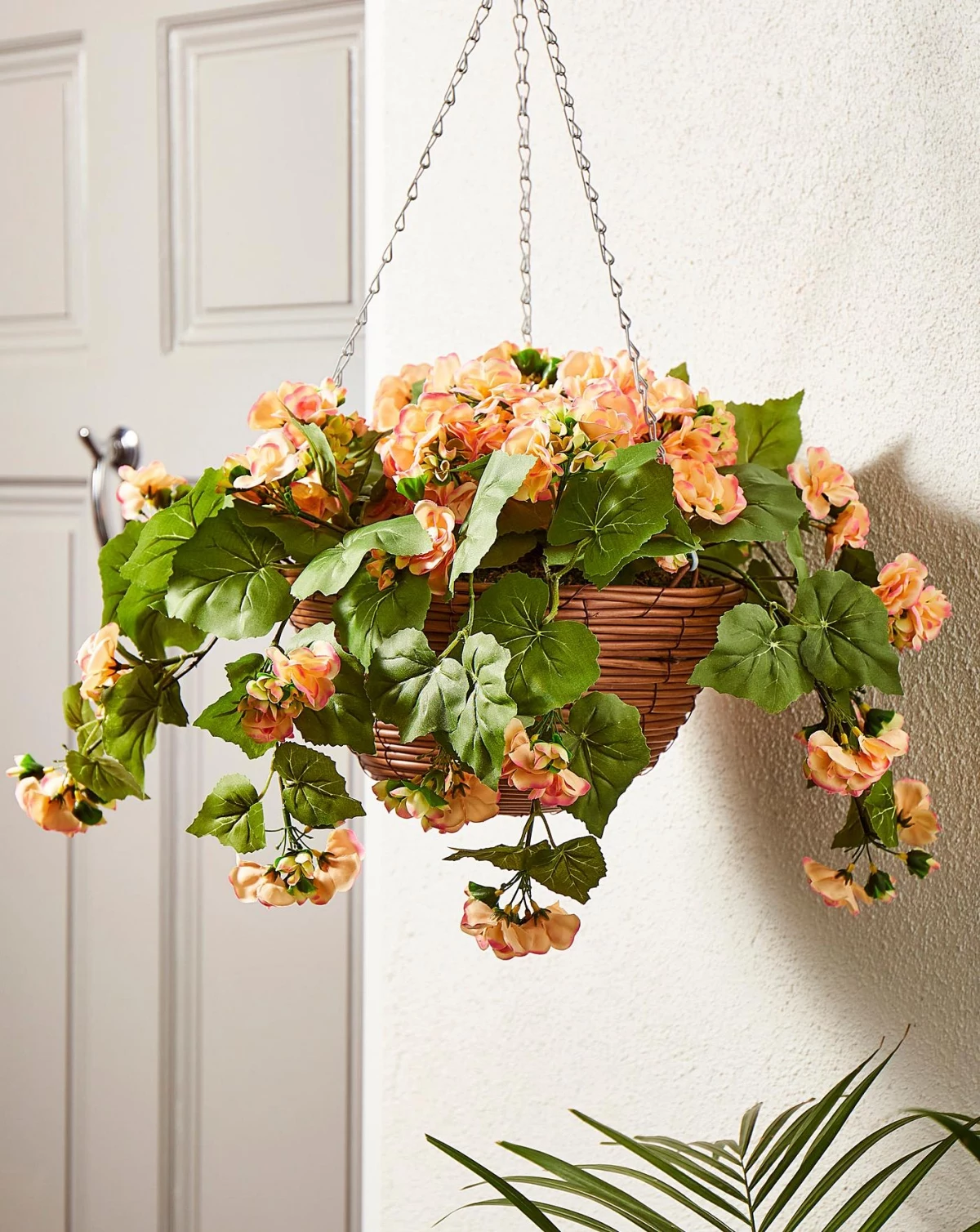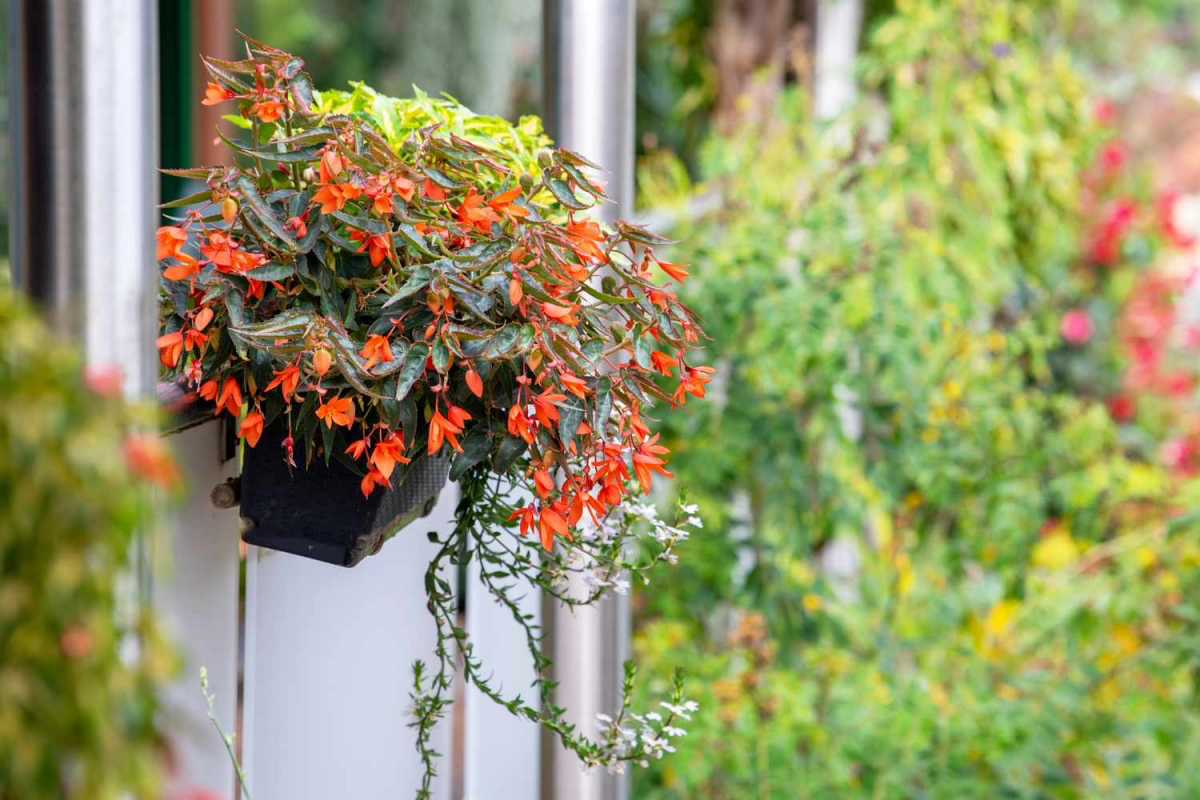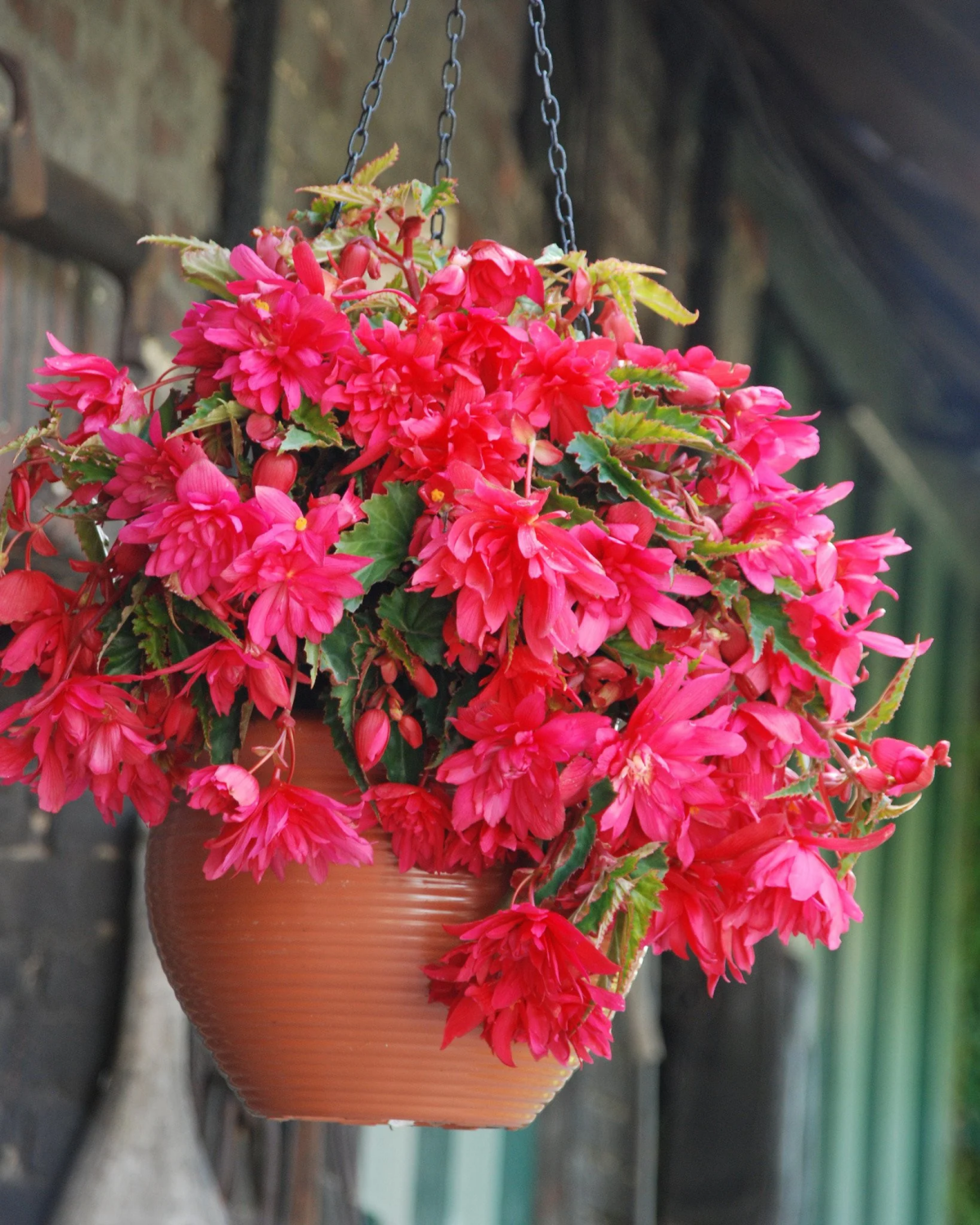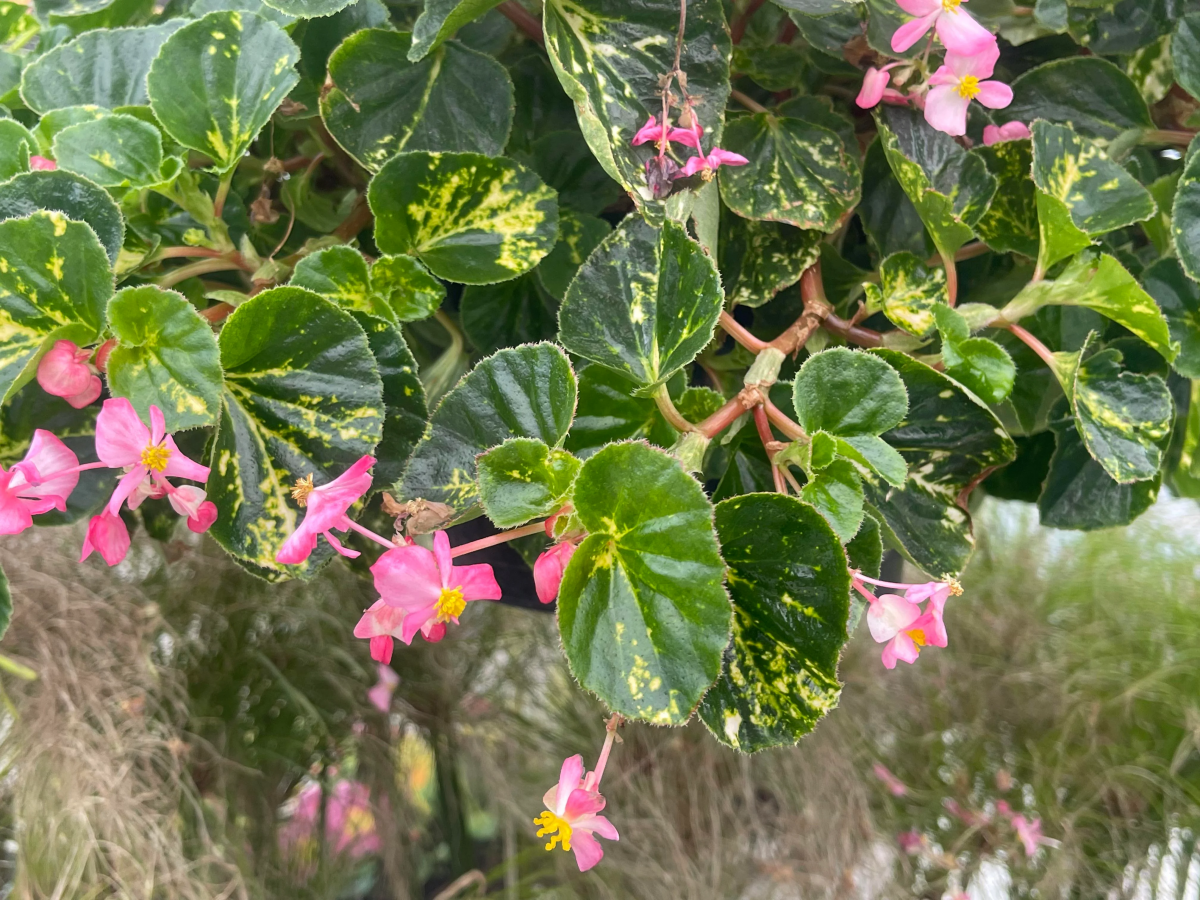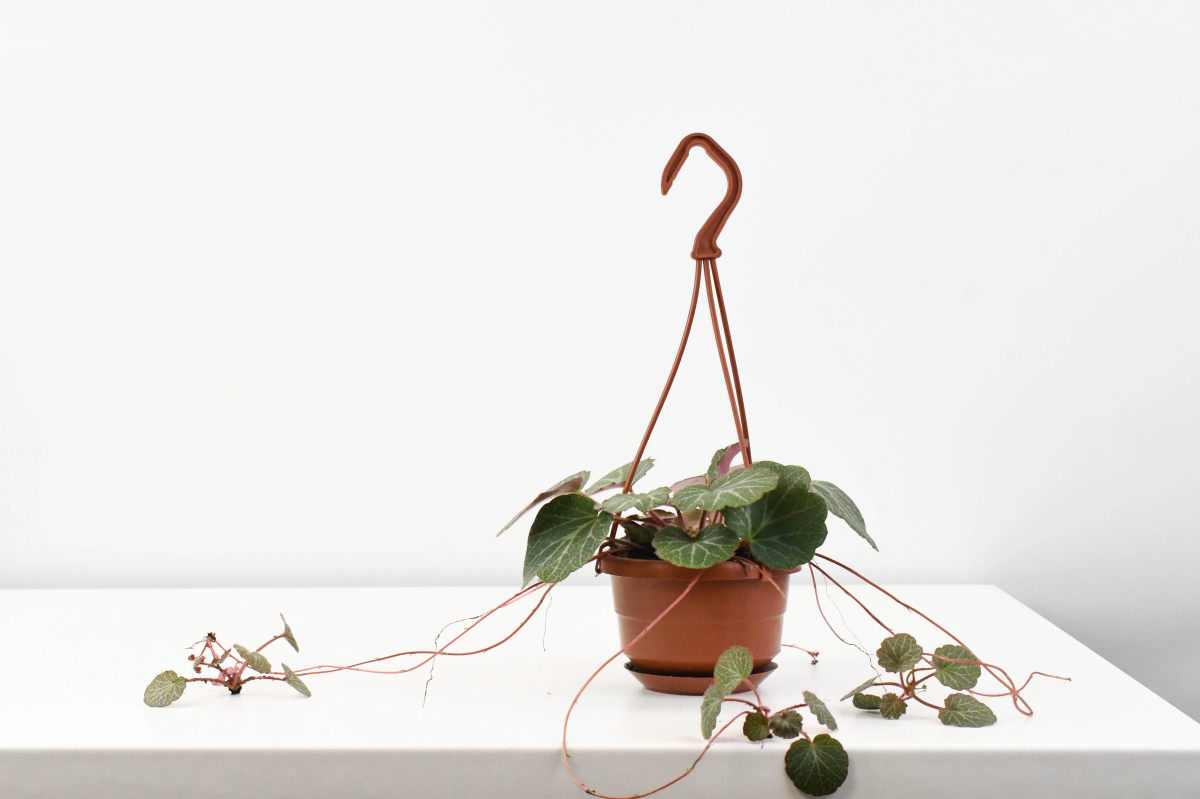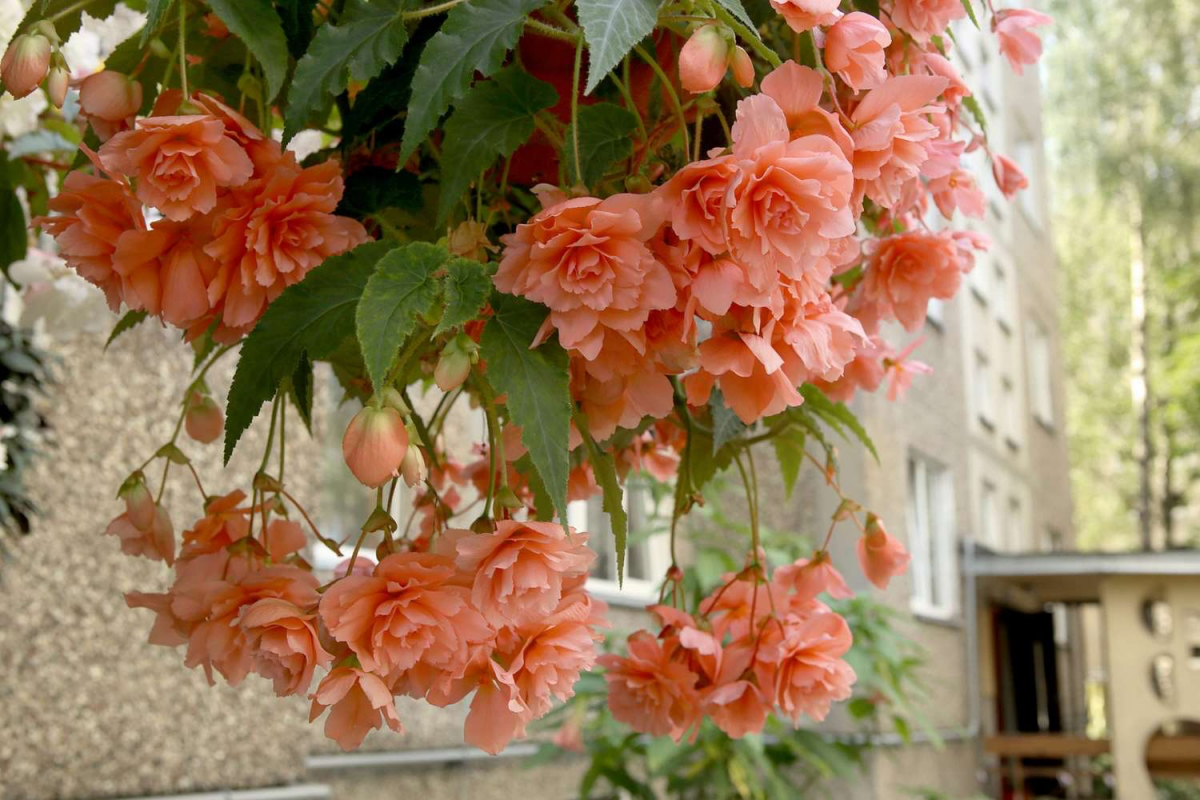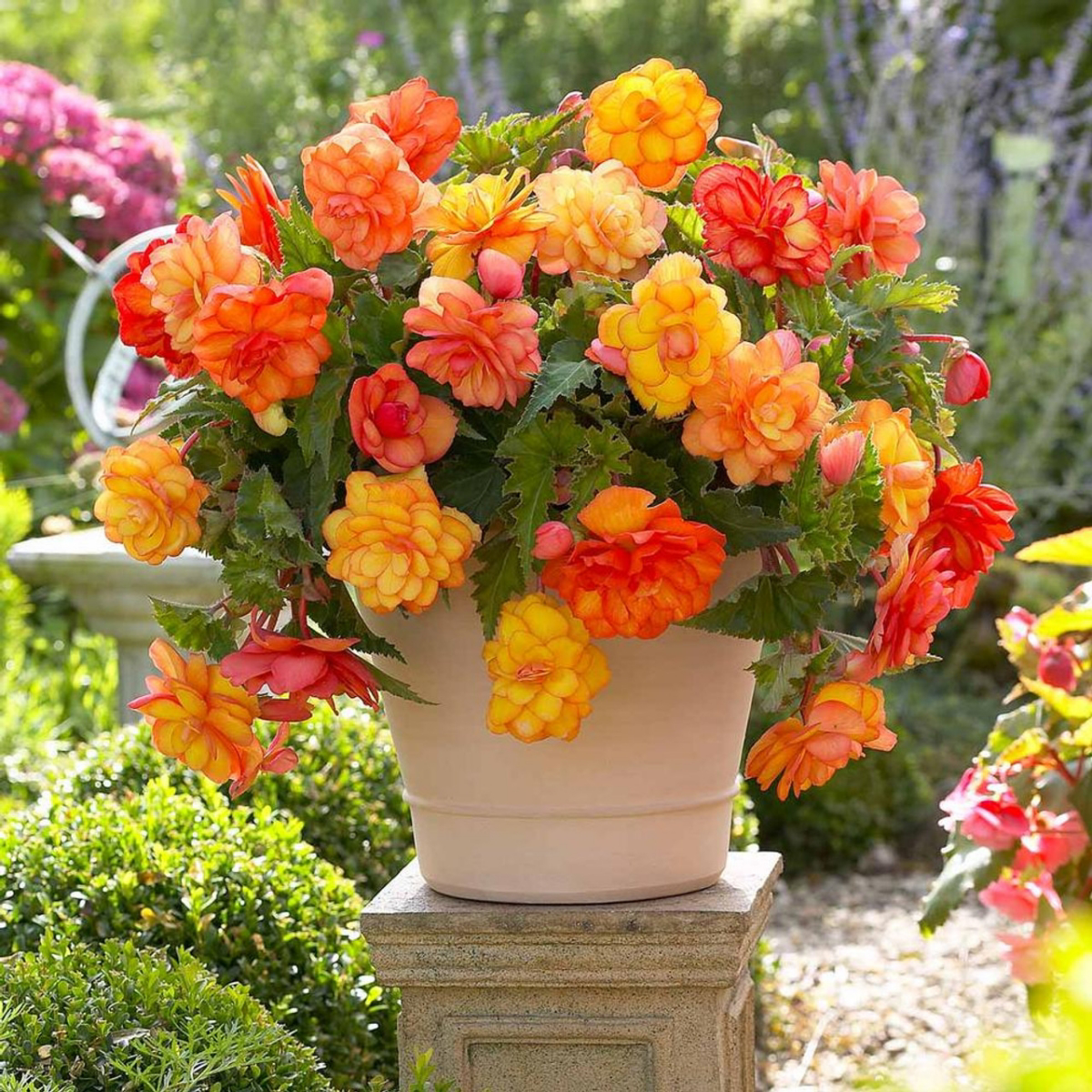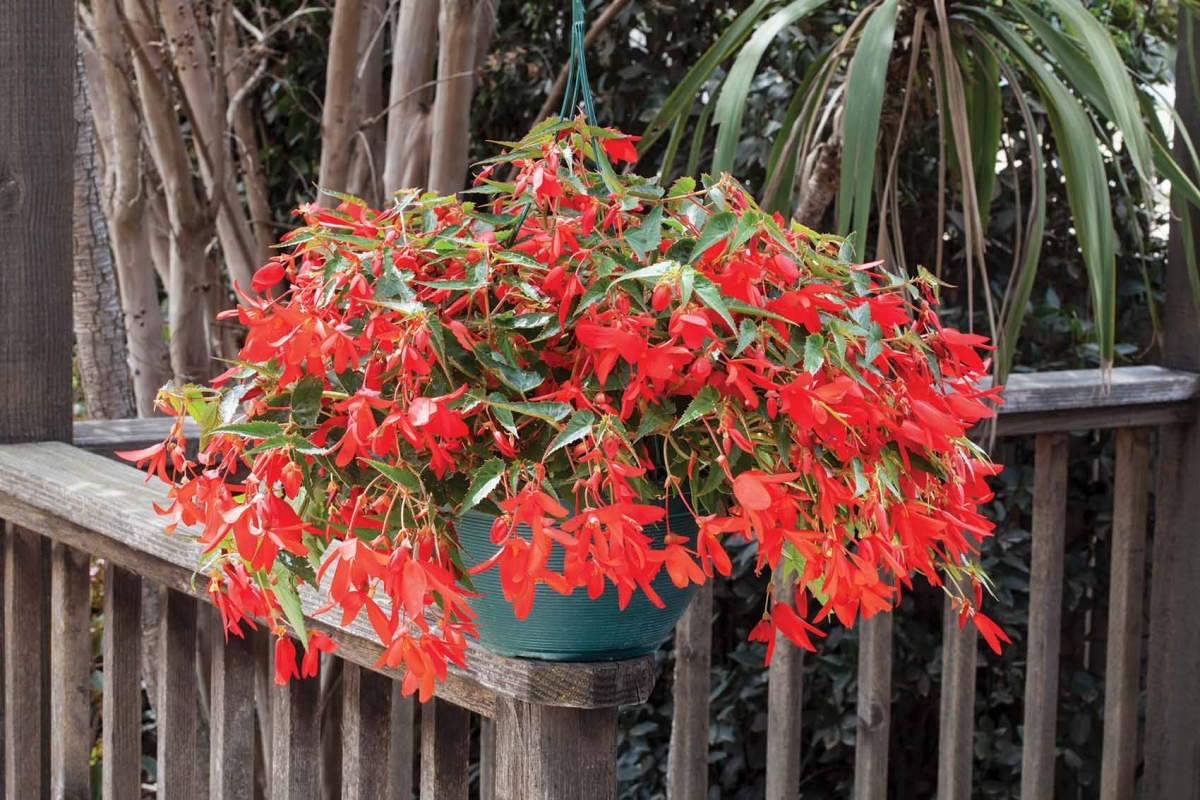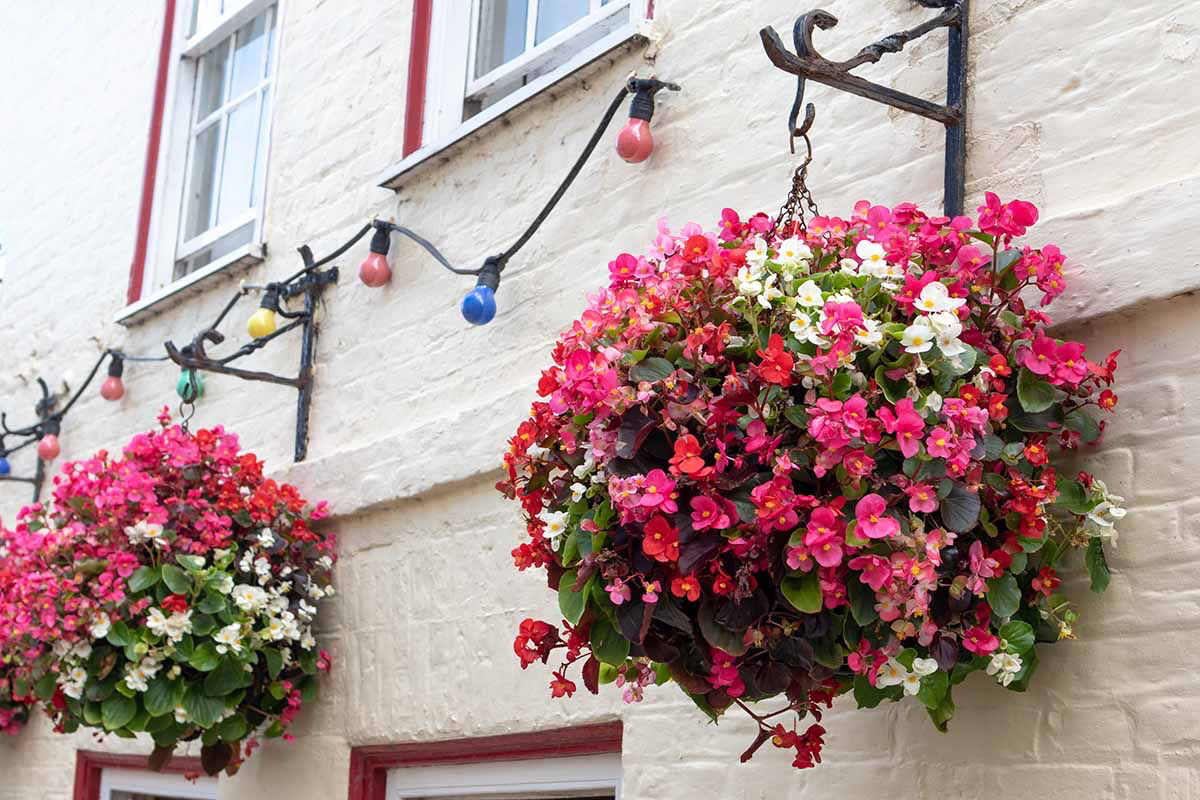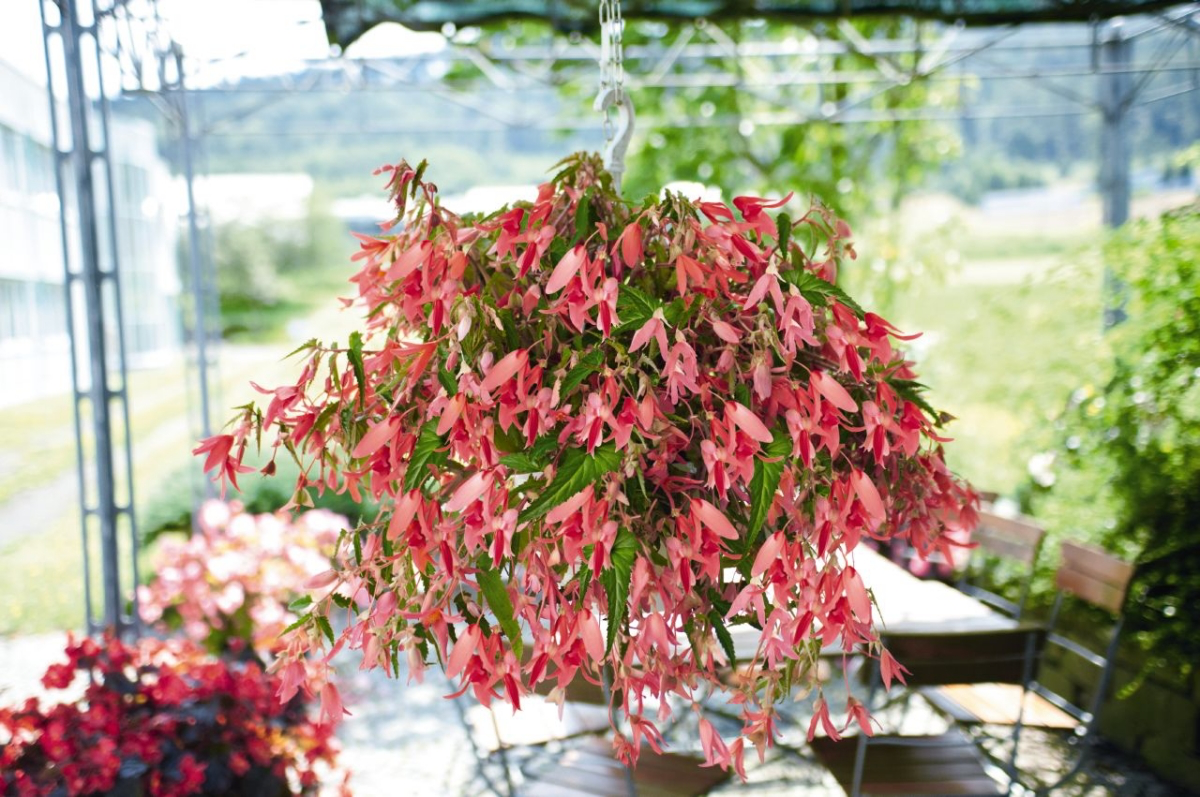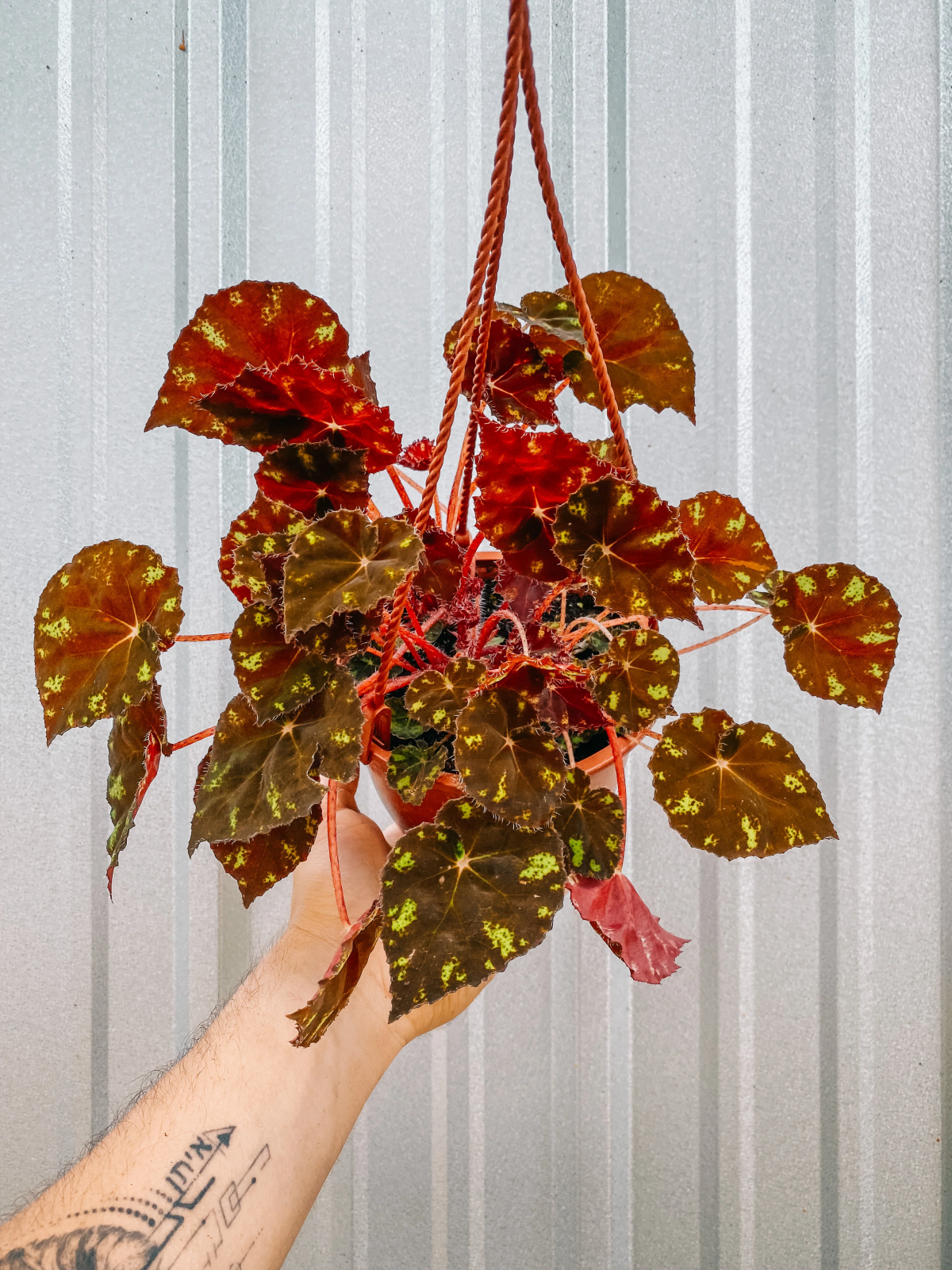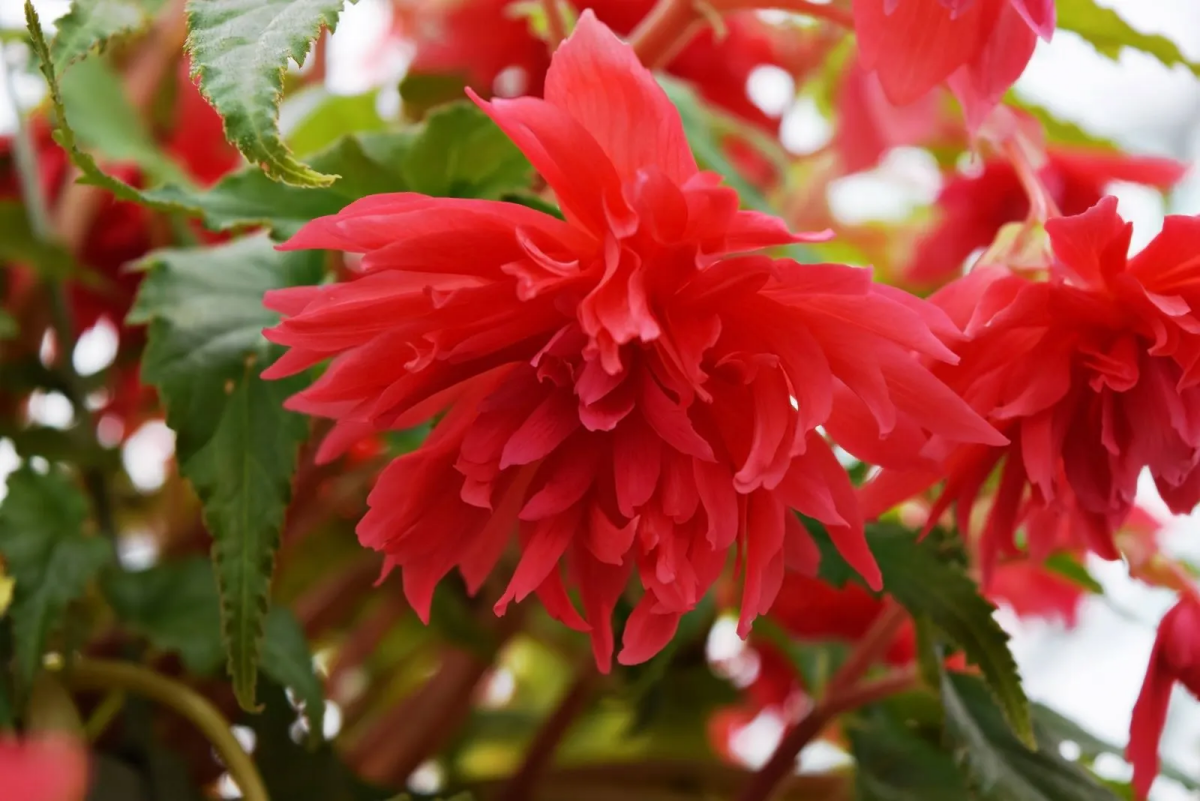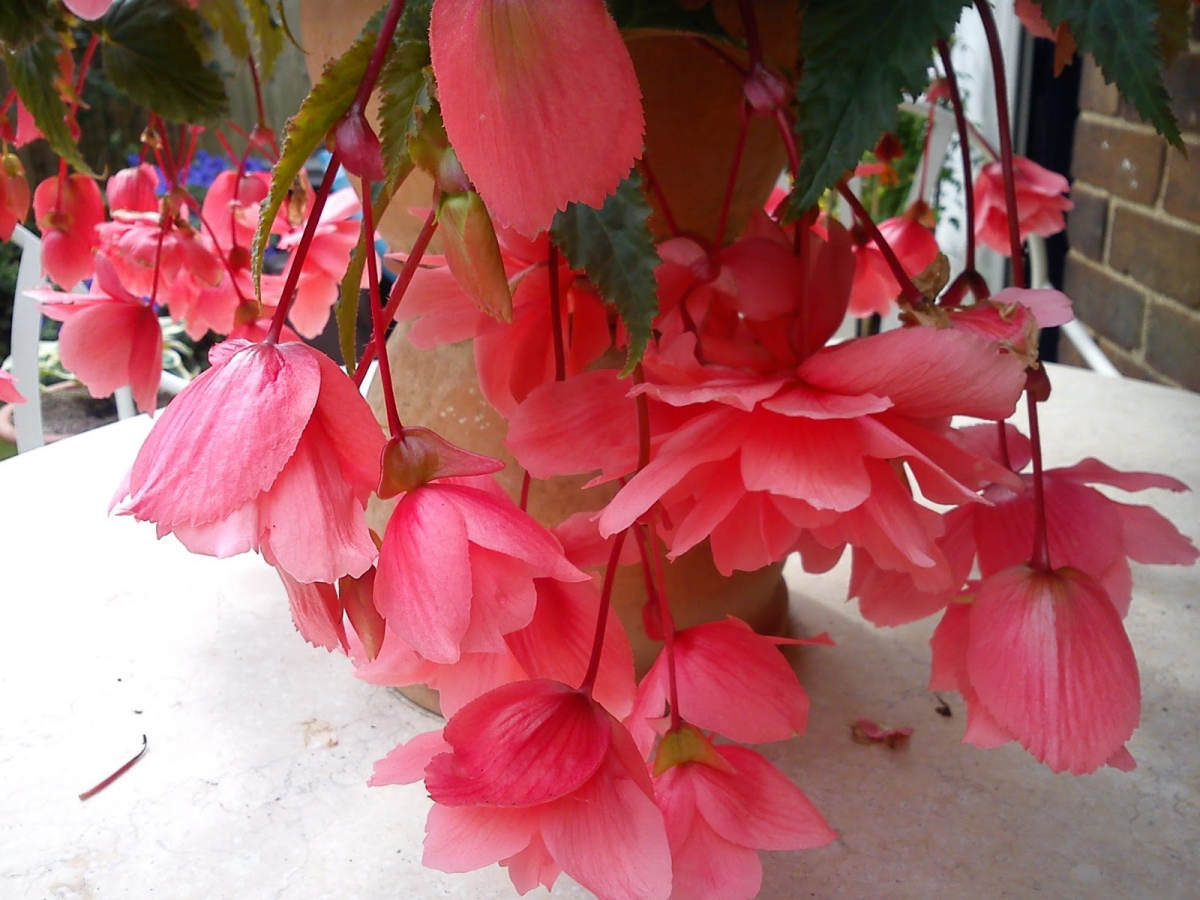Your Guide to Taking Care of a Thriving Weeping Begonia Plant
Have you ever encountered the ethereal beauty of a weeping begonia? These enchanting plants possess an otherworldly charm that can transform any space into a haven of elegance and tranquility. In this guide, we will unravel the secrets of caring for these captivating botanical wonders, offering insights inspired by the likes of Martha Stewart, Southern Living, and Vogue. Whether you’re a seasoned green thumb or just beginning your journey into the world of houseplants, weeping begonias can be a delightful addition to your home. Let’s dive into the fascinating world of weeping begonias together!
Let’s explore the unique beauty and care requirements of the weeping begonia
In this article
What is a Weeping Begonia?
A weeping begonia, also known as Begonia spp., is a graceful flowering plant renowned for its cascading foliage and delicate, pendulous blooms. With origins tracing back to the lush rainforests of South America, these begonias have evolved into a diverse family of plants that thrive in various conditions. They are often characterized by their asymmetrical, heart-shaped leaves and vibrant, jewel-toned flowers.
A weeping begonia is a flowering plant with cascading foliage and delicate, pendulous blooms
Different Types of Weeping Begonias
Weeping begonias come in a kaleidoscope of varieties, each with its unique allure. As you embark on your journey with these enchanting plants, it’s essential to acquaint yourself with some of the most popular types:
- Begonia boliviensis: These begonias are adorned with fiery red or orange tubular flowers, creating a striking contrast against their lush green foliage. They are perfect for hanging baskets or as trailing plants.
- Begonia rex: Known as the “King Begonia,” these stunners boast intricately patterned leaves with vibrant colors, making them a prized choice for collectors.
- Begonia coccinea: With their glossy, waxy leaves and clusters of small, scarlet flowers, these begonias add a touch of classic elegance to any space.
These plants come in a kaleidoscope of varieties, each with its unique characteristics
Who Should Get a Weeping Begonia?
Weeping begonias are like the chameleons of the plant world, effortlessly adapting to various environments and lifestyles. Their versatility knows no bounds, making them the perfect choice for a diverse range of individuals, each with their unique reasons to embrace these botanical treasures.
- For the Young Professional: Picture this: You’ve just moved into your chic urban apartment, and you’re yearning to infuse it with a sense of natural beauty. Weeping begonias are your perfect green companions in the concrete jungle. Their graceful, cascading leaves and vibrant blossoms add an instant touch of class and tranquility to your contemporary space. They’re not just plants; they’re your urban oasis, offering a slice of nature’s serenity amid the hustle and bustle of city life.
- For the Devoted Plant Enthusiast: Weeping begonias present a new challenge and a fresh canvas for your botanical artistry. Their diverse species and captivating varieties beckon you with their unique patterns, colors, and growth habits. It’s a chance to expand your horticultural horizons, diving into the world of begonias and discovering the secrets of their care. They become your passion project, a living masterpiece that adds a dash of intrigue to your collection.
- For the Seeker of Exceptional Gift Ideas: In your quest for the perfect gift, you’re often torn between the conventional and the extraordinary. Weeping begonias are the extraordinary gift you’ve been searching for. Whether it’s a birthday, anniversary, or a heartfelt gesture just because, a weeping begonia plant is a symbol of your thoughtfulness and appreciation. It’s a gift that keeps on giving, a living reminder of your sentiment that brightens any space and stands as a testament to your enduring connection..
These are just a few of the many personas that can find solace and delight in the company of weeping begonias. They are the canvas upon which you can paint your own story, the green thread that weaves its way through the tapestry of your life. So, whether you’re a young professional yearning for tranquility, a plant enthusiast seeking a new adventure, or a gift-giver with a penchant for the extraordinary, weeping begonias await with open leaves, ready to grace your world with botanical luxury.
Weeping begonias are the extraordinary gift you’ve been searching for
Benefits of Owning a Weeping Begonia
Owning a weeping begonia is like inviting a piece of Mother Nature’s elegance into your home, but the benefits extend far beyond their stunning appearance. These botanical treasures are more than just eye candy; they bring a myriad of advantages that enhance both your living spaces and your overall well-being.
- Stress Reduction: In the hustle and bustle of modern life, stress is an ever-present companion. However, the act of caring for a weeping begonia can be a soothing balm for your soul. Scientific studies have shown that nurturing plants, like weeping begonias, has a remarkable ability to reduce stress levels and enhance overall well-being. The gentle routine of watering, pruning, and tending to your begonia becomes a meditative practice, a mindful moment of connection with the natural world. As you immerse yourself in the nurturing process, your worries melt away, leaving you refreshed and revitalized.
- Air Purification: In our quest for a healthier home environment, weeping begonias shine as unsung heroes. These begonias are natural air purifiers, working diligently to cleanse the air you breathe. Their leaves act as sponges, absorbing impurities and toxins from the atmosphere and releasing fresh oxygen in return. They create a microcosm of purity within your home, reducing the presence of airborne pollutants and improving the overall air quality. With a weeping begonia by your side, you can breathe easier, knowing that it’s silently contributing to your well-being by creating a cleaner, fresher atmosphere.
- Easy Maintenance: One of the most enduring misconceptions about weeping begonias is that they are challenging to care for. However, this couldn’t be further from the truth. These resilient plants thrive with a little attention and understanding of their needs. Once you grasp the basics of weeping begonia care, you’ll find that they are surprisingly low-maintenance. Their requirements are straightforward, and with a consistent routine of watering, adequate lighting, and occasional fertilization, they will flourish. Weeping begonias are the embodiment of grace with a touch of resilience, making them an ideal choice for both novice and experienced plant enthusiasts alike. They dispel the notion that elegance must come at the cost of effort, proving that a little care goes a long way in nurturing their beauty.
With a consistent routine of watering, adequate lighting, and occasional fertilization, these plants will flourish
Who Should Avoid This Plant?
While weeping begonias are indeed versatile and adaptable to a wide range of living environments, it’s essential to acknowledge that there are a few specific scenarios where they might not be the most suitable choice. Understanding these limitations will help you make informed decisions when considering weeping begonias for your home or workplace.
- Pet Owners: If you’re a devoted pet owner, your furry companions undoubtedly hold a special place in your heart. However, it’s crucial to be aware that some varieties of begonias can be toxic to pets when ingested. Even a nibble on the leaves or stems of certain begonias can lead to gastrointestinal upset, including vomiting and diarrhea. In more severe cases, it can cause more significant health issues for your beloved pets. Therefore, if you share your living space with animals, exercise caution and consider alternative houseplants that pose no harm to your furry friends.
- Low-Light Environments: Weeping begonias, like many other houseplants, thrive in bright, indirect sunlight. While they can adapt to various light conditions, they may not perform at their best in predominantly low-light settings. If your home or office space lacks ample natural light, you might need to explore alternative houseplants that are better suited to such conditions. Weeping begonias may become leggy and struggle to produce their signature cascading foliage and vibrant blooms in dimly lit areas. To maintain the health and beauty of your weeping begonias, it’s advisable to place them in spaces with adequate indirect sunlight or supplement their lighting with grow lights designed for plants.
Some varieties of begonias can be toxic to pets when ingested
Is a Weeping Begonia a Hard Plant to Take Care Of?
The good news is, weeping begonias are not as finicky as their elegant appearance might suggest. With the right care and attention, you can ensure their thriving presence in your home. Let’s delve into the intricacies of weeping begonia care, step by step.
Weeping begonias are not as finicky as their elegant appearance might suggest
How to Take Care of a Weeping Begonia
When it comes to nurturing your weeping begonia, there are several key aspects to consider. These encompass watering, light, temperature, fertilization, placement, humidity, soil, pot type, repotting, propagation, and protection against pests. Let’s explore each of these aspects in detail.
Watering
Watering is an essential part of weeping begonia care, and it’s crucial to strike the right balance. These plants prefer slightly moist soil but detest sitting in water. Here are some watering guidelines to keep in mind:
- Water your weeping begonia when the top inch of the soil feels dry to the touch.
- Ensure proper drainage in the pot to prevent waterlogging, which can lead to root rot.
- Use room-temperature water to avoid shocking the plant.
These plants prefer slightly moist soil but detest sitting in water
Light
Proper lighting is vital for your weeping begonia’s health and vibrant growth. Here’s how to provide the ideal light conditions:
- Place your begonia where it receives bright, indirect sunlight. Avoid direct sunlight, which can scorch the delicate leaves.
- If natural light is scarce, you can use fluorescent grow lights to supplement the lighting.
Place your begonia where it receives bright, indirect sunlight
Temperature
Maintaining the right temperature is key to the well-being of your weeping begonia. These plants thrive in specific temperature ranges:
- Keep your begonia in an environment with temperatures between 60°F to 75°F (15°C to 24°C) during the day.
- At night, they prefer slightly cooler temperatures, around 55°F to 65°F (13°C to 18°C).
Begonias prefer slightly cooler temperatures during the night
Fertilization
Feeding your weeping begonia is essential to ensure it blooms abundantly and maintains its lush foliage. Follow these fertilization tips:
- Use a balanced, water-soluble fertilizer every four to six weeks during the growing season (spring to early autumn).
- Reduce fertilization during the winter months when the plant’s growth slows down.
Use a balanced, water-soluble fertilizer every four to six weeks
Placement
Choosing the right location within your home is crucial to the well-being of your weeping begonia:
- Place it away from drafts, heating vents, and air conditioners, as these can affect the plant’s temperature sensitivity.
- Be mindful of its proximity to other plants; overcrowding can lead to reduced air circulation.
Make sure to keep this plant from drafts, heating vents, and air conditioners
Humidity
Weeping begonias thrive in humid conditions. To create an ideal environment, consider these strategies:
- Grouping your begonia with other houseplants can create a microclimate with increased humidity.
- You can also use a humidity tray filled with water and pebbles to maintain moisture levels around the plant.
Weeping begonias actually thrive in humid conditions
Soil
The right soil mix is essential for your weeping begonia to flourish:
- Use a well-draining potting mix rich in organic matter, such as peat moss or coconut coir.
- Adding perlite or sand can improve drainage.
For this plant, use a well-draining potting mix rich in organic matter
Type of Pot
Selecting the right pot is a crucial factor in weeping begonia care:
- Opt for a pot with drainage holes to prevent overwatering.
- Choose a pot that provides ample space for the plant’s roots to grow.
Always opt for a pot with drainage holes to prevent overwatering
Repotting
As your weeping begonia grows, it may outgrow its current pot. Here’s how to handle the transition:
- Repot your begonia every two to three years, preferably in the spring.
- Select a pot that is one size larger than the current one, ensuring it has drainage holes.
Make sure to repot your begonia every two to three years
Propagation
If you wish to expand your collection of weeping begonias, propagation can be an exciting endeavor. Here are two common methods:
- Leaf Cuttings: Take a healthy leaf with its petiole (leaf stem), dip it in rooting hormone, and plant it in a small pot with well-draining soil. Keep it in a humid environment until roots develop.
- Division: Gently divide the plant at its root system during repotting, ensuring each new section has roots and leaves.
You can take a healthy leaf and plant it in a small pot with well-draining soil
Pests
While weeping begonias are relatively resilient, they can sometimes fall victim to pesky pests. Here’s how to combat common intruders:
- Aphids and Mealybugs: These tiny insects can be removed by gently wiping the affected areas with a damp cloth or with a mild soap and water solution.
- Spider Mites: Increase humidity around the plant and periodically rinse the leaves to deter these arachnid invaders.
- Fungus Gnats: Allow the soil to dry slightly between waterings to discourage these pests.
Always keep an eye for potential pesky pests lurking around
Conclusion
In closing, my dear readers, the weeping begonia is a mesmerizing addition to any home, and with the right care, its elegance can flourish in your living space. Remember, these botanical beauties are not as demanding as their delicate appearance might suggest. Armed with the knowledge shared in this guide, you can confidently cultivate and nurture weeping begonias to their full splendor. So, whether you’re adorning your cozy boudoir with the begonia’s cascading foliage, or adding a touch of grace to your office space, these enchanting plants are sure to bring joy, serenity, and a dash of natural elegance into your life. Join us in embracing the enchanting world of weeping begonias, and let their ethereal beauty transform your surroundings into a botanical haven. Happy gardening!
Now you know why this mesmerizing plant can be a great addition to your collection!
